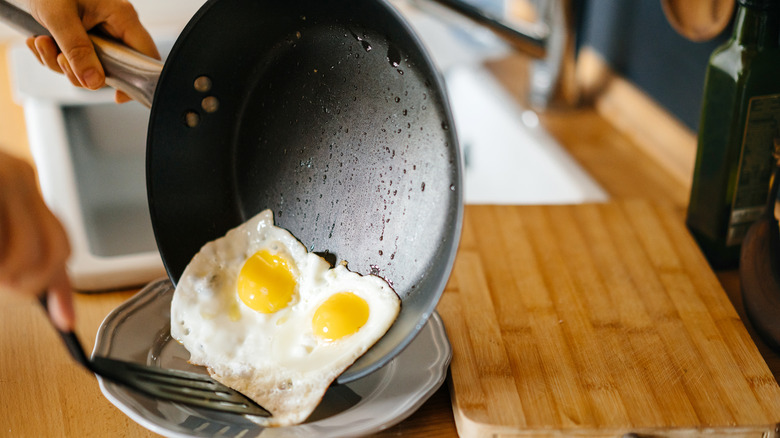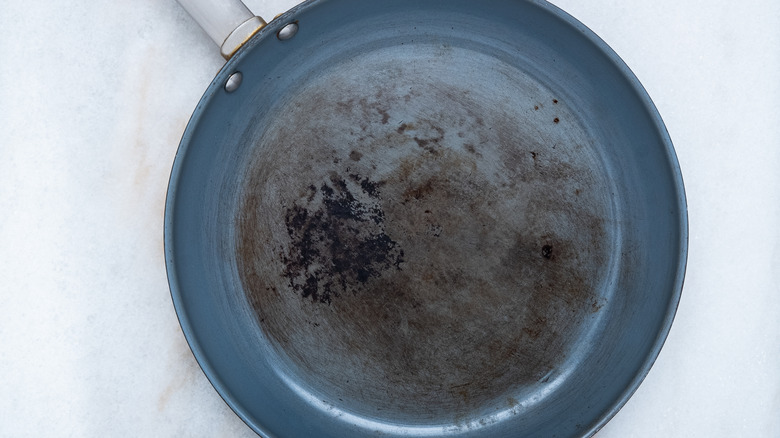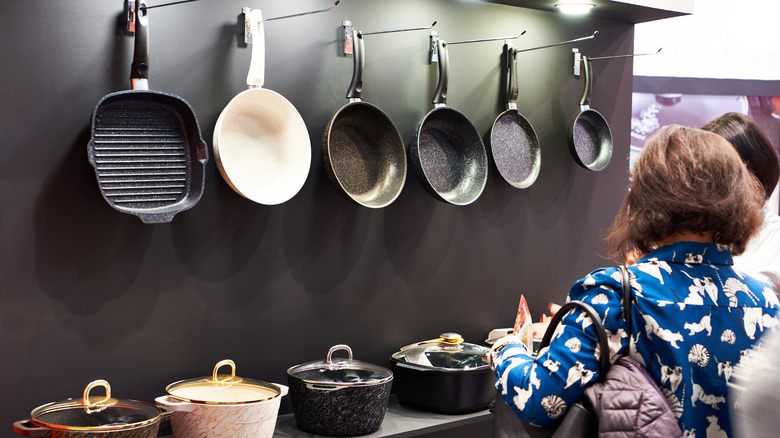Why You Should Stop Using Nonstick Pans Immediately
Convenient? You betcha'. Non-stick pans are a miracle of modern cookware, easy to use, and easier to clean. Even sticky eggs or cheese will roll off the surface of today's non-stick pans, so no more scouring or scrubbing, meaning less time needed for kitchen clean-up. But convenience and ease come with a price, and that cost may be a deal-breaker for a lot of families. Evidence is mounting, as per this piece in Because Heath, that non-stick pans are health hazards that introduce toxins into the environment and into our bodies.
Probably the best-known buzzword for non-stick is Teflon. From The Kitchn, Teflon is a chemical first made in the 1930s to offer a new kind of cookware. The concerns about Teflon center on a chemical used in making the non-stick surface called PTFE, or polytetrafluoroethylene. This chemical has been linked to kidney, thyroid, and liver disease, and may also affect testicular cancer and infertility. Considering the possibility of health issues, Teflon manufacturers switched from using PTFE to PFOA, or perfluorooctanoic acid, in non-stick cookware, which in turn raised concerns of its own. Teflon cookware has been free of PTFE for many years, and free of PFOA since 2013. However, Teflon itself is no longer made in the US.
Follow manufacturer recommendations
So, are we in the clear non-stick pan-wise? Not exactly. First, many people hold on to non-stick pans longer than they should. An older non-stick pan should be replaced regularly, according to Cook's Illustrated. This is especially true if the surface is scratched or dented as this means the coating is flaking off and getting into the food. Similarly, if the pan is warped or discolored, it's time for a new one. This is also true of non-Teflon pans, such as non-stick ceramic. Once the coating is damaged, it's simply time for a new pan.
Additionally, Teflon is still made by non-US companies and is still available on the market. Good Housekeeping points out that a non-stick pan should never be pre-heated while empty, and should not be used at super-high temperatures. When heated over 500 degrees Farhenheit, Teflon begins to break down and emit fumes that can cause a flu-like condition in humans, and worse, kill pet birds due to their delicate respiratory systems.
What's a cook to do?
The good news is that there are a lot of alternative cooking surfaces at a wide variety of prices, and some of them are naturally non-stick or can be seasoned to create a non-stick surface. Healthline has a list that includes ceramic, cast iron, silicon, glass, carbon steel, stainless steel, stoneware, and more. Maintenance on these different pans varies widely — while cast iron is nearly indestructible, ceramic surface pans are comparatively delicate. Be sure to look for cookware that's marked PTFE and PFOA free.
No matter what your ability in the kitchen, there are dozens of brands that sell safe and convenient cookware. Consider how often you and your family cook and what's most important to you –- durability, cost, and easy clean-up are just a handful of factors to consider. Consumer Reports, as well as dozens of cooking, kitchen, and recipe websites, has information about what kinds of pans are effective for different dishes and which pans can go in the dishwasher. The site even provides descriptions of which utensils can be used on various surfaces. Whatever you decide, know there are plenty of alternatives to chemically coated and potentially hazardous cooking surfaces.


